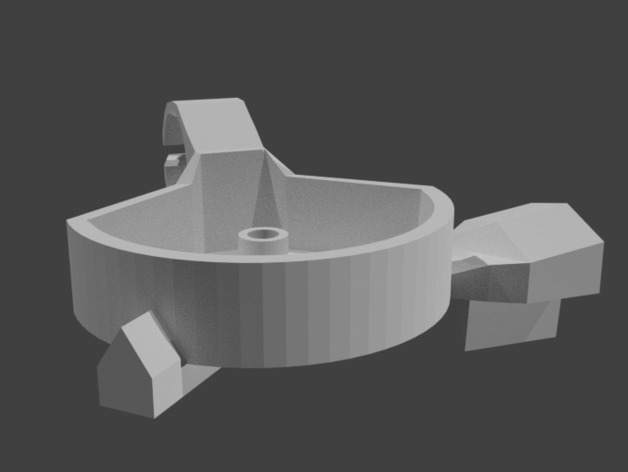
Airspeed Guadge
thingiverse
This is an airspeed gauge prototype in development. The design centers around a weight that hangs down and a wind tab which slides into the weight and gets glued in place for calibration. This allows for easy re-design during testing to achieve accurate readings. The indicator weight features three 6mm holes, making it possible to add weight by sliding in 6mm bolt shanks for calibration purposes if needed. The idea is that this gauge will be useful for measuring airspeed in various situations; however, as a design still in progress, its effectiveness remains uncertain. I created this prototype as a result of flying gyroplanes and noticing a similar steel design on another aircraft. Adding calibrated marks or printing them on a sticker when finished seems like a viable option. However, it is essential to note that using this gauge with any aircraft comes with inherent risks, which are entirely the user's responsibility. I make no guarantees regarding its safety, as factors such as vibration and the risk of it falling off and getting damaged by a propeller need consideration. Furthermore, due to gyroplanes' ability to climb fairly level but descend at an angle, the airspeed indicated may be inaccurate during descent. This is why I'm considering changing the design to incorporate a spring instead. Despite these limitations, this gauge might still be perfectly suitable for hand-held use in training situations on the ground or with a gyroglider (towed behind a car). Adding a thin washer between the base and indicator could ensure smooth movement. It may also be adaptable for hang gliders once modified to include a spring and remove the weight. Feel free to modify it as you see fit. In my personal experience, I've used a Hall gauge which consisted of a tapered plastic tube with a disk, finding it to be a reliable airspeed indicator. A device like this could potentially save money on expensive gauges. However, since gyros cannot stall and I was trained to fly without a gauge, relying on stick feel for airspeed, I wouldn't be too concerned if this prototype fell off. Nonetheless, inexperienced pilots should only use certified gauges or have an experienced pilot test this design first. Printer Settings: Printer: Purusa I3 Rafts: Doesn't Matter Supports: Doesn't Matter Resolution: 0.2mm Infill: High Notes: For printing, a high infill is probably necessary to ensure strength, possibly using ABS but PLA might be sufficient. This is just an initial thought; the actual design and materials used will depend on further development.
With this file you will be able to print Airspeed Guadge with your 3D printer. Click on the button and save the file on your computer to work, edit or customize your design. You can also find more 3D designs for printers on Airspeed Guadge.
